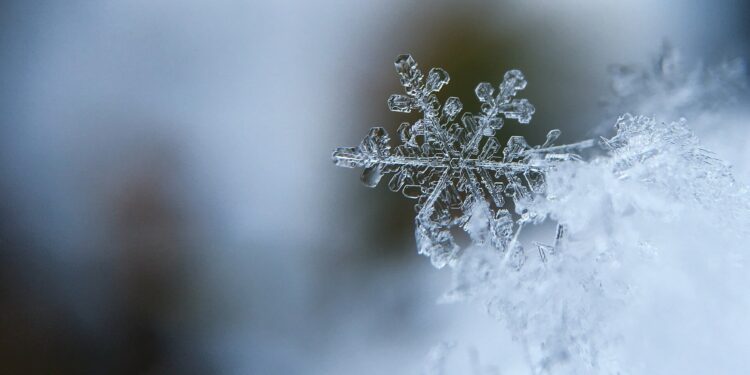Credit: CC0 Public domain
The key to more accurate precipitation forecasts may lie in the complex dance of falling snowflakes, a new study suggests.
The research, which observes the physical movement of falling ice crystals, will help scientists better estimate where and when these crystals will melt into raindrops, a crucial step in the formation of many types of rain.
Published in the journal Chemistry and atmospheric physicsThe study involved scientists observing how fake snowflakes fell into a substance mimicking the atmosphere.
Jennifer Stout, who led the research, said: “Watching snow fall gently can be fascinating, so it was a joy to discover how different ice crystals shape pirouettes and zigzags on their journey to the down.
“Understanding the dance of a snowflake is not only beautiful, but can help us understand the reflectivity of clouds. Each snow crystal in a cloud acts like a small mirror, reflecting and refracting the light passing through it.
By predicting the choreography of an entire cloud, we could better understand the atmosphere and the processes that lead to rain and snow. This intricate coordination of snowflakes can also create a big visual impact, causing stunning phenomena such as sun dogs and ice halos. »
3D printed snowflakes
The research team used 3D printed “snowflakes” of different shapes and sizes, from simple hexagonal plates to complex, multi-branched dendrites. These artificial crystals were dropped into a tank filled with a water-glycerin mixture, simulating atmospheric conditions. High-speed cameras captured their descent, allowing researchers to reconstruct their trajectories and orientations in three dimensions.
The study revealed four main types of ice crystal movement: steady (falling downward), zigzag (swinging back and forth), transitional (a mixture of zigzag and rotation), and spiral (rotation while falling). Surprisingly, complex shapes like dendrites remained stable in motion despite their tendency to create turbulence in their wake, while simpler shapes became unstable much sooner.
Improve rain forecast
These findings have significant implications for weather forecasting. Weather radar, which plays a key role in observing impending rain, reflects signals on water and ice particles in the air.
By better understanding how different shapes of ice crystals move and orient themselves, meteorologists can interpret these radar signals more accurately and better estimate when ice turns to rain. This more detailed data can lead to better predictions about when, where and how much rain will fall.
The study results could also potentially improve scientists’ understanding of how clouds reflect sunlight and trap heat in the atmosphere, with the potential to improve climate models and weather forecasts. long term.
More information:
Stable and unstable falling movements of plate-shaped analogs of ice crystals, Chemistry and atmospheric physics (2024). DOI: 10.5194/acp-24-11133-2024
Provided by University of Reading
Quote: Analysis of snowflake dance could improve rain forecast (October 9, 2024) retrieved October 10, 2024 from
This document is subject to copyright. Except for fair use for private study or research purposes, no part may be reproduced without written permission. The content is provided for informational purposes only.



